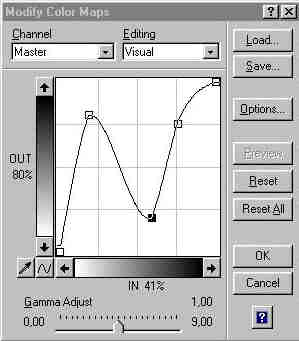Enhanced view of the universe by using computers' abilities to extract deeper information from the observed digital data taken at different wavelengths
In the computer age, the knowledge of the theories of color and perceptions may help our eyes to see deep into the realm of an unseen world. The telescopes taking data of the sky at different wavelengths have been a great boost to overcome the limitations of seeing the universe only in a small band of wavelength. However, these data have no colors or images as such. They consist of only a set of intensity values. These intensity values need to be interpreted before one may see any structure in colors, in the way we are used to seeing in our normal mode of vision.
The quality of visualizing the data will depend on how many groups of
intensity values are there in the data, and how many color values we have at our
disposal. For example, if the data consists of values which can be put into 256
different groups, one would need at least 256 colors to get out all the
information, hidden in the data, in the visual form. By using a palette of
lesser number of colors one will loose some data values, and thus loose some
information. The modern computers provide us a palette of millions of colors,
which give us an enormous advantage to extract deeper information from the data
one may take. It is then possible to see the details of the information hidden
in the digital data.
An image from the data is made my associating a color value to an intensity value. One can associate black color value to the lowest intensity value and white color value to the highest intensity value, and then distribute 254 shades between black and white among the other intermediary intensity values. This is how one can create an image made of shades of grey. One can also use the inverted order, which means that one can associate the highest color value to the lowest intensity value, and lowest color value to the highest intensity value. In such case one visualizes the picture as in the negatives of films. If one has less color values than intensity values then one can skip the data with low intensity values and instead use the available color values to the higher intensity values in the data. Or one can do the reverse. In such cases, the images will look different from the image if one used color values for all intensities. Therefore, how an image looks depends on how one distributes color values on intensity values. This method of distributing colors on different intensity values is known as color mapping. With different color mappings one can extract different information from the data.
Moreover, using computer programs, one may manipulate the intensity values. It is possible to make transformation which will make the higher values in the data set to appear as lower values, and all lower values will appear as higher values. It means that the least luminous objects in the sky may be made to appear as the most luminous object, while one won’t be able to see the most luminous object in the sky as seen by our eyes. Thus one can gather information from the data about the less luminous objects, which otherwise would have got lost in the normal process of color mapping.
Another advantage of studying the universe with the computers is that different sets of information obtained can be combined to form an image which will give a fuller information hidden in the data. However, there is a problem of limited resolution in the data set. This can be partially overcome by transforming each pixel point into vector objects. Then one can do mathematical interpolations between the points and go on magnifying the picture to an enormous extent without loosing the basic information stored in the data.
So, all forms of seeing are specially constructed ways of seeing. There exists nothing which can be called the true vision of the reality. Our eyes gather the information which are necessary for us to know, and reject the rest of the information. The computers have liberated us from these handicap. Now the new ways of seeing the reality have brought us to the realm, where we can see through the dark realm of the cosmos.
A few examples of seeing the unseen cosmos are presented in this site. The images are extracted from the observed data taken with optical, infra-red, X-rays and radio telescopes by using the abilities of the computers to reveal immense details of the cosmic structures, which remain hidden in the usual way of seeing the world in rainbow colors.
Read more...
Copyright ©2006 Anup Rej, All Rights Reserved.